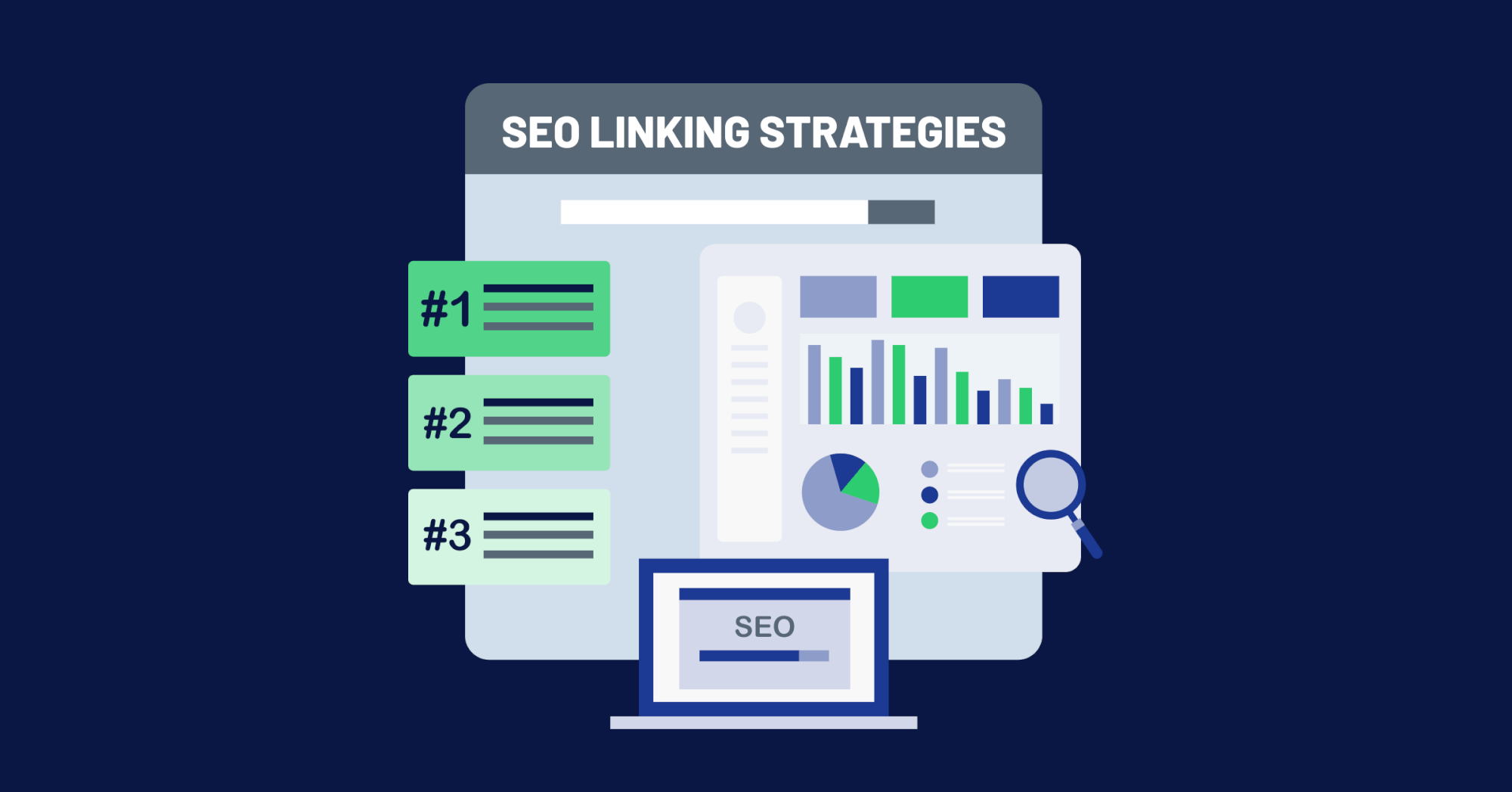
Easy Steps to Boost Your Website Traffic
In the dynamic world of digital marketing, staying visible online is essential for growth. One of the most impactful tools to boost a website’s visibility is Search Engine Optimization (SEO), mainly through effective linking strategies. This guide delves into the intricacies of linking, highlighting its role within various SEO strategies and how marketers and beginners—can leverage it to drive growth.
What Is SEO, and Why Are Links Crucial?
SEO enhances a website’s organic visibility in search results through strategic content, technical upgrades, and improved user experience. Links, or hyperlinks, are the backbone of the internet. They connect content across domains, enabling users and search engines to navigate effectively. Here’s why they matter:
- Credibility: High-quality backlinks signal authority to search engines, making your website more likely to rank higher.
- Navigation: Internal links improve user experience by guiding visitors to other relevant pages on your site.
- Relevance: Links from related content boost contextual alignment, helping search engines understand your niche.
For Beginners: Start by auditing your existing website to identify any linking opportunities, such as linking to related blog posts or pages.
(Image created by Canva)
Types of Links and Their Roles in SEO
Understanding the different types of links is essential for crafting an effective strategy:
-
Backlinks (Inbound Links)
Backlinks are links from external websites to your own. These are like “votes of confidence,” signaling to search engines that your content is valuable and authoritative.
- Best Practices:
-
- Focus on earning backlinks from high-authority domains within your industry.
-
- Avoid buying links or using link schemes, which can lead to penalties.
- How Beginners Can Build Backlinks:
- Write guest blog posts for industry websites, ensuring your content is insightful and includes a link to your site.
-
- Create shareable resources like infographics, research reports, or how-to guides that naturally attract links.
-
- Reach out to web admins to fix or reclaim broken links pointing to your site (e.g., if someone links to a page you’ve moved or deleted).
(Image created by Canva)
-
Internal Links
Internal links connect different pages on your website. They guide users through your site, enhance navigation, and help distribute link equity.
- Best Practices:
-
- Use descriptive, keyword-rich anchor text that aligns with the destination page.
-
- Avoid excessive internal linking within a single page to prevent confusion.
-
- Link to high-value pages that contribute to your business goals, such as product pages or cornerstone content.
“Content clusters remain a cornerstone of linking strategies. Structuring content in meaningful, interconnected ways is a practice that will carry through 2025. The focus isn’t just on SEO value but on providing links that make sense for the user journey, encouraging further exploration and engagement.” – Kevin Young, Senior SEO Analyst
- Link to high-value pages that contribute to your business goals, such as product pages or cornerstone content.
- How Beginners Can Build Internal Links:
-
- Start by mapping your website’s structure to identify logical connections between pages.
-
- For instance, if you have a blog post about “Best Practices for SEO,” link it to your service page offering SEO consulting.
-
- Use tools like Google Search Console to identify orphaned pages (pages with no incoming links) and integrate them into your internal link structure.
-
External Links
External links direct users to content on other websites. These links provide context, build trust and signal relevance.
- Best Practices:
-
- Link to credible and authoritative sources only.
-
- Use external links sparingly to avoid distracting users from your site.
-
- Ensure that external links open in a new tab to keep visitors on your page.
- How Beginners Can Use External Links:
-
- Include external links in blog posts to support statistics or claims. For example, if you mention “Top SEO Trends for 2025,” link to a reputable industry report.
-
- Avoid linking to competitors’ websites. Instead, find third-party resources that add value to your content.
“User experience should guide internal linking strategies. Robotic or overly calculated links that don’t serve the reader’s needs feel outdated and ineffective. As Google evolves, our linking strategies need to reflect user priorities, creating pathways that genuinely enhance content navigation.” – Jessyca Souza, SEO Associate
- Avoid linking to competitors’ websites. Instead, find third-party resources that add value to your content.
-
Interdivisional Links
These links connect different sections or subdomains of a company’s website, such as linking from a corporate blog to a support knowledge base.
- Best Practices:
-
- Use consistent branding and anchor text for a seamless user experience.
-
- Monitor performance to ensure users are finding these links useful.
- How Beginners Can Build Interdivisional Links:
-
- Identify relevant subdomains or departments within your company (e.g., linking a product page to a tutorial on using that product).
-
- Encourage collaboration between teams to create mutually beneficial linking opportunities.
(Image created by Canva)
Critical Components of Effective Linking
For a link to be impactful, it must be:
- Relevant: Align the link’s anchor text with the destination page’s content.
- Visible: Place links like the first paragraph, calls-to-action, or summary sections in high-visibility areas.
- Functional: Regularly audit links to ensure they are not broken or outdated.
Pro Tip for Beginners: Use free tools like Screaming Frog to crawl your website and identify linking issues.
“Users and search engines alike prioritize authenticity. Artificially generating backlinks or campaigns without real value won’t cut it in an AI-driven, skeptical environment. Building trust through linking strategies requires real, helpful content that resonates with users and avoids manipulative practices.” – Iris Wang, SEO Strategist
Linking Best Practices for Marketers
- Focus on Quality: A handful of links from authoritative domains is better than hundreds from low-quality sites.
- Strategic Placement: Place links naturally within the content, significantly where they enhance user engagement.
- Monitor Analytics: Use tools like Google Analytics to track the performance of your linking strategy, including referral traffic and bounce rates.
Use Case for Beginners: A small business offering web design services can write a case study on a successful client project and include links to their portfolio, service pages, and external tools they used (e.g., WordPress).
“We’ve shifted from rigid interlinking formulas to a more flexible approach that prioritizes user value over SEO mechanics. It’s about connecting topics naturally. The paradigm shift in linking is focusing on user intent and exploration rather than stuffing content with unnecessary links. Instead of forcing anchor text for SEO, we now consider where users might naturally want to explore further, aligning with their learning journey.” – Aybars Gungor, Content Strategist
Common Mistakes to Avoid
- Buying Links: This can result in penalties from search engines and damage your reputation.
- Irrelevant Links: Linking to unrelated pages confuses users and search engines.
- Excessive Linking: Overloading content with links can dilute their value and overwhelm readers.
- Broken Links: Regularly audit your site for broken links and fix them promptly.
How N-E-E-A-T Principles Elevate Your Linking Strategy
When crafting an effective linking strategy, applying N-E-E-A-T principles (Newsworthiness, Expertise, Authoritativeness, Trustworthiness) ensures that your links add value for users and search engines. Here’s how each component applies:
-
Newsworthiness
Links to timely, relevant content capture user interest and show search engines that your website is dynamic and up-to-date. For example:
- If your blog post references the latest industry trends, linking to credible news sources or research reports reinforces the timeliness of your content.
-
- To build newsworthy backlinks, create shareable assets like surveys or data studies that industry blogs and journalists find valuable.
-
Expertise
Links from and to authoritative sources demonstrate your knowledge and credibility. For instance:
- In a blog about SEO trends, linking to articles from established SEO authorities like Overdrive Interactive positions your content as expert-level.
- To attract expert links, publish in-depth guides or thought leadership pieces that industry peers respect and reference.
“We’ve seen tremendous visibility when our content is cited by multiple subject matter experts and linked back to their author pages. It highlights the power of peer-validated content over traditional branded approaches. For businesses with in-house expertise, building a subject matter expert strategy not only increases visibility but strengthens connections with local communities. It’s the personal touch that drives conversions. Google is moving toward prioritizing personal connections and authenticity. Authors who write for credible publications outside their own ecosystem will gain significantly more SEO equity.” – Julian Connors, Director of SEO
-
Authoritativeness
Authoritative backlinks signal to search engines that your website is a trusted resource. Focus on:
- Earning backlinks from high domain authority sites in your niche, such as industry publications or academic institutions.
- Ensuring internal links guide users to cornerstone content, establishing your site as a reliable information hub.
-
Trustworthiness
Trust is built through transparency, quality, and relevance. Apply this by:
-
- Linking only to reputable sites with secure domains (HTTPS).
- Avoid low-quality or irrelevant backlinks that could harm your SEO and user trust.
Incorporating customer testimonials or case studies as internal links to highlight your credibility.
“The authority assigned to authors might start with how much information we can provide about them. Detailed author profiles and robust schema are critical to establishing credibility. Incorporating links to credible sources, like the author’s education or prior work, creates a stronger foundation of trustworthiness in SEO strategies.”– Kitan Lawson, SEO Analyst
By incorporating N-E-E-A-T principles, your linking strategy becomes a natural extension of your content’s value, ensuring users see your site as a go-to resource for accurate and reliable information.
(Image created by Canva)
The SEO Payoff: How Links Drive Results
Effective linking strategies lead to:
- Improved rankings and search engine visibility.
- Enhanced user experience and navigation.
- Increased domain authority and trust.
A notable example is a case study involving Gentry Dentistry, which initially struggled with limited visibility for non-branded search terms due to crawlability issues and a weak backlink profile. By addressing these problems—cleaning up technical errors, building high-quality backlinks, and targeting relevant, high-value keywords—the practice saw a remarkable 161% increase in Google rankings for its key terms. This underscores the immense value of pairing a clean link profile with a strategic focus on authority and relevance.
Final Thoughts: Building for the Long Haul
SEO is not a one-time effort. Consistency and patience are vital in building a solid link profile. Focus on creating content that genuinely benefits your audience; high-quality links will follow. Staying updated on SEO trends and refining your strategies can unlock sustained growth and visibility.
“Authenticity is going to be key in 2025. Linking strategies must align with the content and audience preferences rather than just following a rigid formula. Traditional linking strategies like internal linking and content clusters will persist, but they need to evolve to meet the expectations of nuanced audiences. One challenge for clients is understanding their content library. Many don’t realize the value of their existing resources, and that’s where we can help build smarter, more effective linking strategies.” – Tyler Rouwhorst, SEO Strategist and Innovation Lead
If you’re looking for an SEO partner to transform your digital strategy, contact Overdrive Interactive today.









